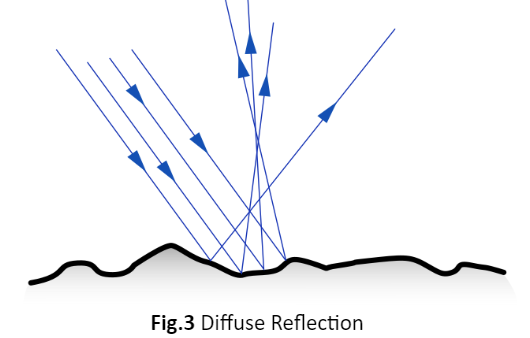Interactions of Light Waves
Interactions of Light Waves
This lesson aligns with NGSS PS4.B
Introduction
Have you ever noticed the luminescent quality of a cat's eyes during low-light conditions when they are exposed to light? Cats possess a special layer of cells in the back of their eyes which is responsible for reflecting light. This specialized layer serves to enhance a cat's visual ability by providing an additional opportunity for light detection. Reflection is a one-way phenomenon in which electromagnetic waves engage with their surroundings. Among these waves, visible light holds a particular significance due to our capacity to perceive it, thereby it is easier to explain interactions involving visible light. In this article, we will learn about the reflection of light, as well as the law of reflection.
Reflection of Light
Reflection is the process by which light waves bounce off a surface and change direction. When light encounters a reflective surface, such as a mirror or a calm body of water, it bounces back predictably.
For Instance, when you see yourself in a mirror, you are observing light that has undergone two reflections—first from you and then from the mirror. Reflection of light enables us to see objects that do not emit light themselves. When light strikes an object, some of the light reflects off of it and is detected by your eyes.
The Law of Reflection
Light reflects off the surfaces the same way a ball rebounds from the ground. If a ball is thrown vertically downward onto a smooth surface, it will bounce straight up. However, if you throw a ball at an angle, it will bounce away at an angle.
The behavior of reflected light follows two fundamental laws: the law of incidence and the law of reflection.
Law of Incidence
This law states that the incident ray, the reflected ray, and the normal all lie in the same plane.
Law of Reflection
According to this law, the angle of incidence is equal to the angle of reflection (the angle between the reflected ray and the normal).
These laws hold for all types of surfaces, from smooth mirrors to rough textures.

Types of Reflection
Reflection can be categorized into two main types: regular reflection and diffuse reflection.
Regular Reflection
Also known as specular reflection, this occurs when light waves strike a smooth and polished surface, such as a mirror. A mirror consists of glass coated with a uniform layer of highly reflective substance such as powder. This reflective coating reflects nearly all the light incident on it uniformly.
The reflected rays maintain a uniform direction, resulting in clear and distinct images. Specular reflection occurs when light beams are reflected at the same angle. When our eye detects the reflected beams, we can see a reflection on the surface.

Diffuse Reflection
This type of reflection takes place on rough or uneven surfaces. When dealing with such uneven surfaces, the angles of reflection between different points display a wholly random pattern. On rough surfaces, light rays incident at slightly distinct points on the surface are scattered in completely different directions.
When light waves encounter such surfaces, they scatter in various directions, producing a softer and less focused reflection. This is why we can’t see objects because not all of the reflected light is directed toward our eyes.

Summary
- Reflection is the process by which light waves bounce off a surface and change direction.
- When light encounters a reflective surface, such as a mirror, it bounces back predictably.
- The law of incidence states that the incident ray, the reflected ray, and the normal all lie in the same plane.
- According to the law of reflection, the angle of incidence is equal to the angle of reflection. This law is true for all types of surfaces.
- Regular reflection occurs when light waves strike a smooth and polished surface, such as a mirror. While diffuse reflection takes place on rough or uneven surfaces.
Related Worksheets:













